December 2008 Archives
Finnish Board Game Society wishes Merry Christmas to everybody. Sampo Sikiö did a great job with the greeting card, so I wanted to share it here:

I haven't been looking at Google Analytics for this blog in a long time. I was slightly surprised by the results, really. First of all - search (ie. Google) brings only about 60 % of the visitors. I'm used to much larger share. What's even more odd is the amount of direct traffic, about 21 %. That's a lot in my opinion.
My top keywords are three variations of "gameblog": together, apart and with a hyphen. I don't have really good keywords, really, but I get a lot of long tail searches for wildly different topics. I'll just hope people find what they're looking for...
What comes to content, this blog has very few killer entries. The front page is most popular, without any competition whatsoever. The front page has about 25 000 hits so far this year, while the ten most popular page has just 600 hits.
However, I managed to create something unique and attractive this year, and that's the playing card reviews. That category has been a minor hit. I should do more of them, but unfortunately the new job I started in June killed that project.
Some hopeful was looking for "over sized naked playing cards", found my playing card reviews and bounced away, unsatisfied. Too bad... People are also surprisingly interested in the facial hair of playing cards.
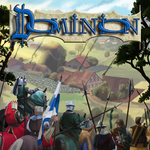
Dominion is officially a great game. I just played a game with Johanna - we haven't played any games in a long time. She enjoyed Dominion enough to say she wants to play it again, which is rare. It's also rare to find a game that doesn't annoy Johanna a bit, she's usually annoyed by something in just about any game.
This just reinforces my view that Dominion is an excellent game. It's so easy to teach, as all cards are face up and you can play with open hands and guide the newbies. Johanna got the hang of it pretty quickly and in the end was starting to really figure it all out. Of course she won, too, which is never a bad thing when learning a new game (and I swear I didn't lose on purpose!).
I haven't been terribly busy blogging here anyway, but I think I'll warn you now: next year is likely to be the quietest so far for Gameblog. The first half or so, anyway, since our second child is due early January. In less than a month, that is!
That, of course, is totally cool and I'm more than a bit thrilled about it. The new family member is most welcome: we can then play four-player games, once the kids grow up a bit. For now, though, I believe my gaming time will be somewhat limited. Nooa didn't hurt my game hobby a lot -- quite the contrary, since I started the weekly game sessions last year -- but I'm afraid the second child will change that.
Well, that's temporary, like most things with kids. To be honest, I'm not that excited about the little baby phase. Nooa, our charming first-born is now 2.5 years old and rather chatty little fellow. I like that, much more fun than a small baby, however cute babies are.
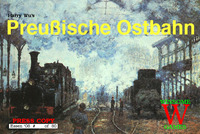
Yesterday's main game was Preußische Ostbahn. We had four players this time and I was the only one with previous experience. Hannu won the game, though, with amazing score of 649 -- I was second with 421!
This time I counted the turns taken. I started with a triple turn -- a modest start, indeed. That boosted me to a quick lead, which didn't last. More problematic was Tapani's start: he started with one cube in the cup, then two, then full four cubes in the cup for turns 3-8. 23 cubes, something like that? He got, what, two turns out of those 23 cubes. Talk about odds!
So, no surprise he was badly behind. This kind of bad luck could be fatal, but combined with inferior play from other players, Tapani wasn't far from second place -- he was just 21 points behind me and would've passed me with the next dividends. In the end I got 17 moves, Petri had 15 moves and both Hannu and Tapani had 8 moves. Hannu was without moves in the end, when it didn't hurt him at all.
The game developed in an interesting way. This was definitely the longest game so far, more than 90 minutes I think and we had a total of 16 dividends (I haven't counted them before, but this feels like a lot). The western board was highly developed, while the eastern side wasn't developed at all. I have a feeling that the Preußische Ostbahn might be something of a timer -- especially if it develops slowly, the game will be longer.
Well, there's plenty to learn here, and plenty of interest to learn. Ostbahn is really fun to play, a top-notch game. Definitely one of the hottest games right now!

I tried Toppo with the correct rules and two players and it was better. Quite fun, actually. Simple, yet entertaining. However, I'd prefer if the game came in small Amigo box (I have a feeling it might fit), or had otherwise a smaller box.

We also played Container, but had to quit before the game was finished. Petri was very much winning the game, and I was likely last. Though -- Tapani had just murdered his game by taking two loans and running out of money with no containers whatsoever. He had a huge pile of containers in the island, so he might've done fairly well, depending on how long the game would've taken.
Continuing from the part 1, part 2 and part 3.
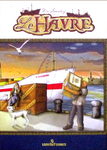
Le Havre. I had already decided to pass Le Havre because I felt it was going to be too long for me anyway. Well, Tommy suggested it for my last game in Helcon and I agreed, because I do want to try it. We got a third player and played a quick three-player game -- that took two hours. So yes, too long, especially if it gets longer with more players (I'm not sure if it does).
But... it's really good. I mean, it's perhaps even better than Agricola. I don't know, but it's good. It's a similar resource management game. Get some basic stuff, turn it into more advanced stuff, buy buildings, use them, feed your people, all sorts of dealing and fixing. I liked it a lot.
However, I'm not buying. If I bumped into a cheap copy at some point in the future, I'd probably buy it -- but I think Le Havre would be a three-player game for me, and absolutely no slow players allowed nowhere near the game. While the game is good, I don't think it's good enough for three or four hours and I can see it fairly easily taking that long with undecisive players.
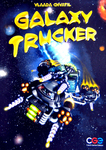
Galaxy Trucker. Believe it or not, I haven't played this one before. Ilari was kind enough to teach me the game. It's fun! First you build a spaceship under time pressure: you draw tiles with spaceship components and try to form them into a coherent ship that can do everything necessary.
Then you test you how you do: the ships start flying and cards are drawn. The cards have all sorts of features, mostly nasty stuff like space pirates or the dreaded meteor storms. If you have enough guns and shields you can survive, but most likely you don't have. Usually, it seems, the question isn't "will it hurt?" but "how much?".
The thing is, building a space ship is very hard. You want storage space, plenty of guns, good engines, shields, battery power for the shields and guns and engines, enough crew and so on. The ship structure is important, too, as you don't want loose connectors hanging out and the ship needs to be sturdy: you don't want a single meteorite to rip off half your ship (take my word on this, I've tried!). So, you must make compromises and that tends to spell trouble at some point.
There's plenty of luck, but this is a fun experience game, really. However, it's an experience game with a game included, too.
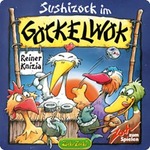
Sushizock im Gockelwok. This is a sibling to Heckmeck am Bratwurmeck. Both are simple dice games, with some push-your-luck in them. In Sushizock you try to collect good sushi tiles, but also need bad bone tiles, because you must match each good tile with a bad tile. Very simple, yet quite entertaining if you're into dice games. Harmless fun, but plays quick (quicker than Heckmeck, which has a tendency to overstay its welcome).

GiftTRAP. A party game where players are presented with an array of gifts. Everybody gives one of the gifts to everybody else. Then players rate the gifts and scores are counted: if you gave the correct gift to the right person, you get giving points and the recipient gets receiving points. Once you max out on both points you win.
It's simple and reasonably entertaining. Still, a party game is a party game and this one is of little interest to gamers, in my opinion. The idea here is somewhat clever, but of course you need to have a clue about your fellow players, otherwise the game will be relatively pointless. Many people seem to like this on BoardGameGeek -- almost 7 average rating is great for a party game -- but I'm in no rush to try the game again.
And, guess what! That's pretty much it. It was a really nice weekend of games.
Let's see what I didn't cover in part 1 or part 2... see also part 4.
GemBlo Pyramid. This dice-pyramid game is apparently good, if played with the expert rules. Well, we couldn't figure them out, so we tried the basic game. That one isn't good, since making the pyramids isn't particularly interesting and the game seems a tad too dependant on getting good dice. Or then not, but in any case, if I try GemBlo Pyramid again, the expert game it'll be.
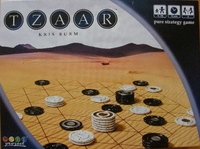
TZAAR. This is the latest entry in the Gipf Project and a surprisingly simple game. Both players have three types of pieces, but they all are functionally identical: all move like rooks on a hex grid and capture other pieces. First move you make must be a capture, other can be a capture or a stacking move. You can build stacks of your own pieces and to capture, the capturing stack must be at least as high as the stack being captured.
It's deceptively simple. The reason you have three kinds of pieces is the victory condition: you win when your opponent doesn't have all three kinds of pieces available. You also win when your opponent cannot capture. Very simple, yet of course deeply challenging once you get into it. This is a really fine abstract, I'd say, and one I'm eventually going to add to my collection, I think.

Kamisado - on the other hand - is less interesting. This is an ugly game, with really strange-looking pieces and very bright and colourful board - a far cry from the black and white elegance of Gipf games. Here a simple goal of getting your piece across the board meets an elegant mechanism, where the square the piece ends its moves determines which opposing piece will move.
Kamisado is very much about counting moves ahead and avoiding mistakes. Squares will become dangerous as opposing pieces have clear routes to the goal row, so you can't move to this colour or that colour until the enemy pieces have been blocked. Clever, but I didn't like it very much. This is certainly a game with possibilities for really deep play, but for some reason I don't find this nearly as charming as, say, the Gipf games.

Keltis. This board game version of Lost Cities won Reiner Knizia his first Spiel des Jahres. It was well-deserved. The game is a good family game. Play cards to advance on scoring tracks, very simple and yet quite engaging. Nothing I'd need to own, but fun to play, sure!
There are some extra features added to the basic structure, the scoring is simplified and as a clever change, you can play cards in either ascending or descending order. This makes things more interesting, when everybody isn't trying to get the same cards at the same time. The Irish theme is of course non-existential and perhaps a tad bland compared to Lost Cities, but at least the green board looks pretty. I do understand the Lost Cities re-theming Rio Grande did.
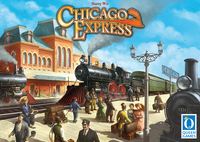
Chicago Express. This new edition of Wabash Cannonball is pretty. Typical Queen Games quality, that is. This time the game is excellent, too, which is an improvement as most Queen games haven't been that inspiring. I'm not in a rush to update my copy of Wabash, but this edition does make teaching the game a tad easier.
Well done, Queen Games, and congrats to John Bohrer for getting this deal done. I wonder how it was possible, since Bohrer doesn't seem like the easiest guy in the board game industry and I've heard similar things about the Queen Games boss... Who cares, when a game this good gets a treatment this fine.

Toppo. This one is fairly unknown considering it's a Knizia title published by Rio Grande and Amigo. Toppo is a speed game, where players quickly play cards, trying to "top" a set of three cards with colourful symbols that remind me of ESP test cards.
Topping a set means that every card shares a colour or shape with one of the cards on the table. If that happens, then the cards replace the earlier set and show goes on. First player to get to under ten cards wins. There's a hazy detail in the rules: if the cards need to match colour or shape, what if they match both? "Or" is a tricky word. The rules of the game are pretty bad for such a small game in any case. I missed few points (well, large part of problems were caused by reading the rules too quickly), causing the game to seem a tad tedious.
Played correctly Toppo might be an interesting speed game. Nothing like Flix Mix or Set, by no means, but something decent anyway. I'll comment more once I try this game with completely correct rules.
One more part, I think, and that's Helcon games covered.
Continuing my Helcon review, see part 1 here, there's also part 3 and part 4.

Preußische Ostbahn. Another Historic Railroads System game from Winsome, fairly closely related to Wabash Cannonball. However, this one's billed as "German family game". Indeed, the game is a lot more gentle - yet still quite a challenge.
This time the railroads are building in Germany. There are eight different railroad companies, each of which has a special characteristic based on its history. Köln-Mindener, for example, was focused on paying dividends, hence it can only spend $5 on track-building each turn. Each railroad has three shares and a bunch of track cubes.
The turn order mechanism is the key to this game. Each round players put cubes in a cup. The player in lead puts in one cube, the second puts two cubes, third three and so on. Then cubes are drawn from the cup, one for each player, and put in order on the player order track. That's how the turns are taken. If you're first (and there are more than three players), the odds are pretty good that you won't take a turn. For few rounds... This is a really nice mechanic, if you can tolerate not taking turns for a while. Of course, the important thing is to guarantee success even when you don't get turns.
Turns can be used in three ways. You can pass, expand a railroad or sell shares. Expanding costs money, increases the railroad income and triggers dividend payments. Every time two railroads meet for the first time a general dividend payout is triggered, with the railroad doing the connecting build paying double dividends.
Shares are sold in auctions, just like in other Winsome games. The order is somewhat limited: every company must sell their second share before any can sell their third (the game begins with an auction of the first share of each company). The game feels more gentle than Wabash because the shares won't dilute. Buy a share and you get the full value of the share added to your personal income.
I played the game twice, once with four players and once with three players. Both times there was lots of money in the game, with winning scores up in approximately $400. Strange enough, the four-player game was actually richer: the winner had $472, while I won the three-player game with just $391.
In the first game I thought we had a runaway leader, as one player had huge dividends. He did win, but I was second with $421, so the difference was smaller than I expected. The winner paid too much for some shares, that's why, I think. The strategy is somewhat hazy for now, but apparently the players in lead should invest in the companies owned by the players who are behind, since those companies will see plenty of development.
The game ends when each company is directly connected to at least two different companies (or everybody agrees that's not possible). I like the end condition, it seems fairly natural and has enough control.
I like Preußische Ostbahn a lot, perhaps even more than Wabash, at least now, because Ostbahn is simply more fun to play.
Helcon came and went. It's by far my favourite board game event, and once again proved to be excellent. It's small enough, about hundred people or so, yet offers plenty of good board game action. I travelled to Helsinki with Sami, Olli and Robert and five bags of stuff, mostly games I sold or wanted to sell.
We managed to navigate to the location without problems, which is no small feat, since none of us had any previous experience of driving in Helsinki. I knew the route, though, so we made it easily enough. The event was held in the same location as before, the meeting hall of The Finnish Evangelical Lutheran Mission. This time we were able to play for 24 hours a day, which was a nice bonus for some people - I don't really care for night games myself. I prefer sleeping (heresy, some might say, but I'm very much a morning person).
Some games were pretty popular: I'd say Powerboats, Ghost Stories and Battlestar Galactica were the top three, people played these a lot. There were at least three 18xx games played and a group of war gamers played a game of Here I Stand which took pretty much the whole Saturday. There was also a Dominion tournament, which was a success.
Here's what I played:

Gipsy King. I started with this 20-minute game from Corné van Moorsel. Some folks praise this in Geek and I can see why: the game is pretty good for such a quick game. It's pretty abstract - the theme is completely hollow, to be honest - but looks nice and is easy to play: just slap down pieces on the board, trying to make large chains of bits. There are some nice timing issues - you can pass a turn to get advantage later - and other neat details.
I thought Gipsy King was decent, but in the end not very interesting. There's a comparison I must make: why play this when I could be playing Die Dolmengötter? Not bad and I can understand some people like this, but I am not thrilled. I wouldn't say necessarily say no if someone suggested this, though.
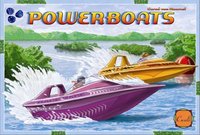
Powerboats. The other game from Cwali. This is a boat racing game with a pretty cool die mechanic. The game uses three-sided dice. You start with one and can adjust the amount with one each turn, either add one or remove one. You must roll any new dice and you can re-roll the old ones - or you can keep the old values. So, if you want, you can keep your speed. This is nice, as it reduces the luck of the draw.
The racing happens on a large hex map. The boats can only turn 60 degrees (one hex side) in turn and only before moving. There's a nasty rule where you must drive in a direction where there's enough room - if you roll too much, you can find yourself going in wrong direction. The water is full of obstacles, of course. It's simple and fun, so no wonder the game was popular. I thought it was entertaining and the game scaled to six players well. I'm just not very keen on racing games - if I was, this would be a mandatory purchase. Our game took 30 minutes for a single race, but with better players it would've been over sooner - I spent quite a bit of time in the bushes.
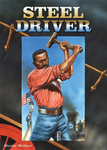
Steel Driver. This was one of the games I really wanted to try. Steel Driver is Martin Wallace's latest take on his earlier Prairie Railroads games - this is interesting because Wabash Cannonball shares the lineage. The games are somewhat distant cousins, I'd say. Steel Driver is different, but good.
The basic idea is similar. Railway shares are auctioned, the bid money is used to build track and players try to get as much money as possible. However, in Steel Driver money is purely points. The bidding is done with cubes: everybody gets the same amount of cubes each round. Cubes can be stored for use on later rounds. There are five rounds and each railroad sells exactly one share each round. Our five-player game took 65 minutes.
Once all shares are sold, the railroads operate. They can build one link on the map and gain income for the cities connected. This goes on for several rounds until all railroads have ran out of money and must pass. Passing order determines the order railroads operate on the next round. Players get money - points, that is - for the value of the companies they run each round.
Most of the points are made in the end, though. The map has cities of different colour and in the end, those cities are filled with cubes. The companies take turns picking cubes from cities where their networks reach, trying to collect sets of different colours. The bigger the sets, the more money the company makes. Each shareholder gets paid accordingly.
It's interesting. The end game is particularly curious, as it makes up for such a huge share of the money players make. The early game is basically setup for that end game. You want to get as many shares as possible in companies that will make good money in the end. That's a nice challenge.
The biggest difference between Wabash and Steel Driver lies in the money, I'd say. I like it, because the difference in the auction systems makes both games interesting and worth owning (I'm saying this because I already own Wabash and have ordered Steel Driver). For now I'd say I prefer Wabash a bit, but want to explore Steel Driver some more.
Instead of one huge post, I think I'll do several shorter ones. So, this is enough for now. Next up, Preußische Ostbahn... see part 2 for that and part 3 and part 4 for other games.
